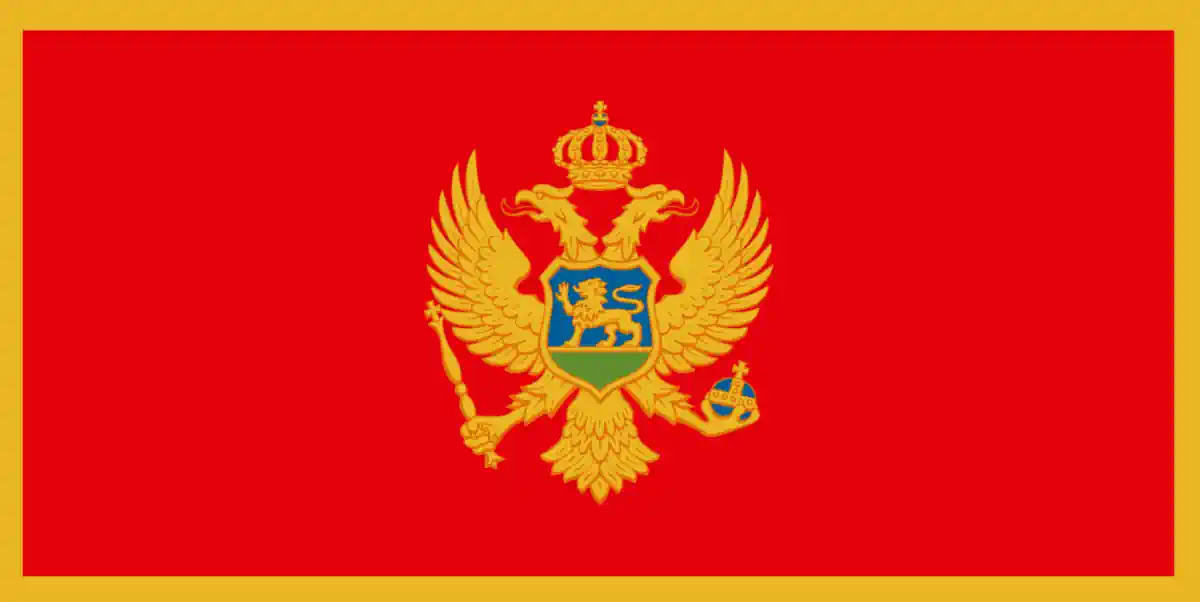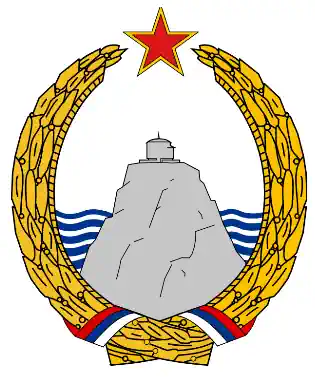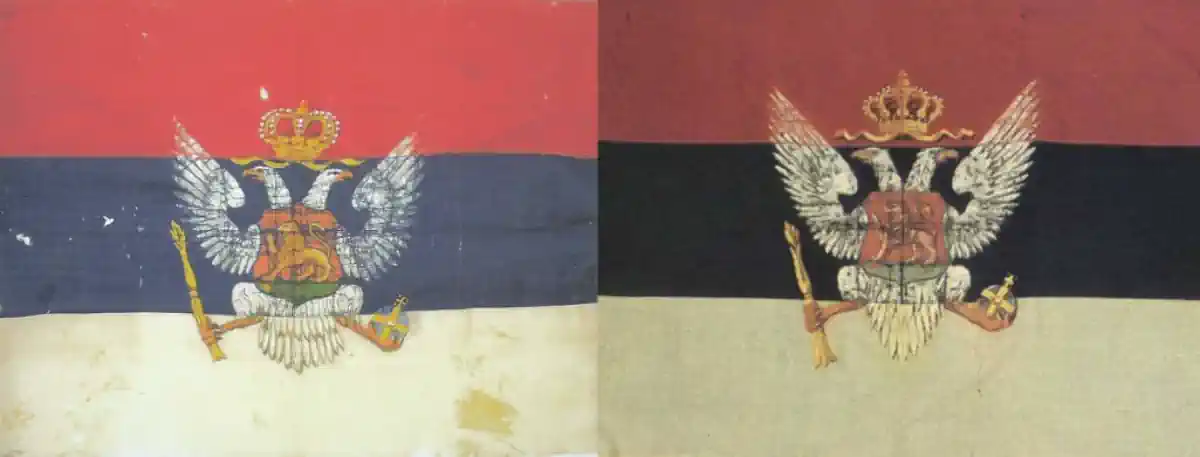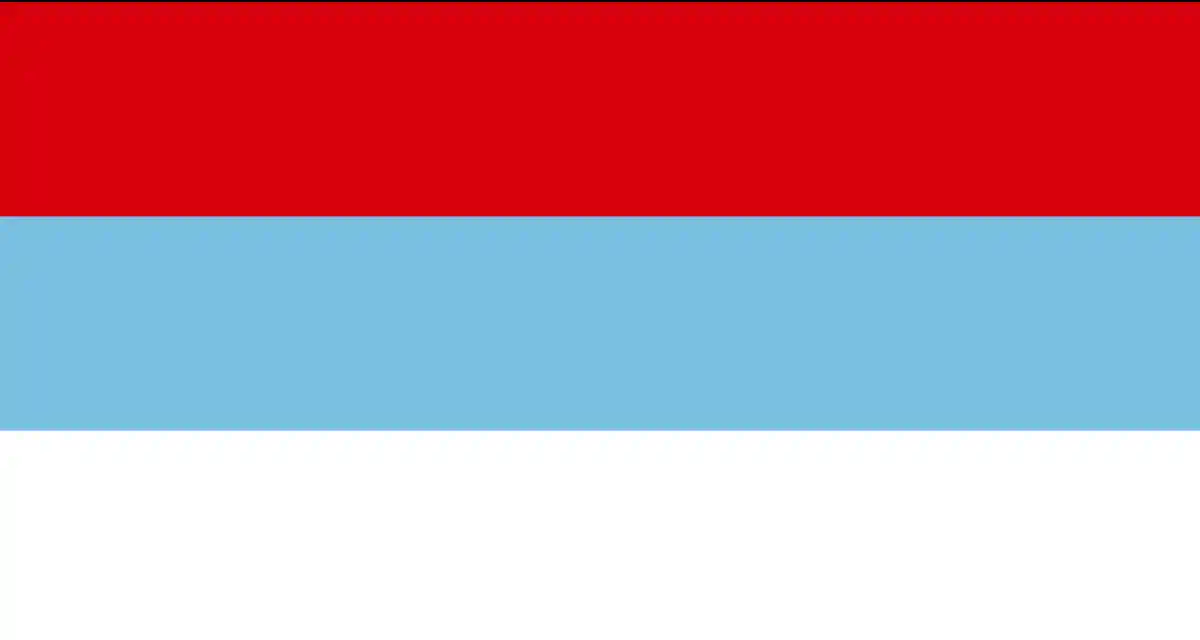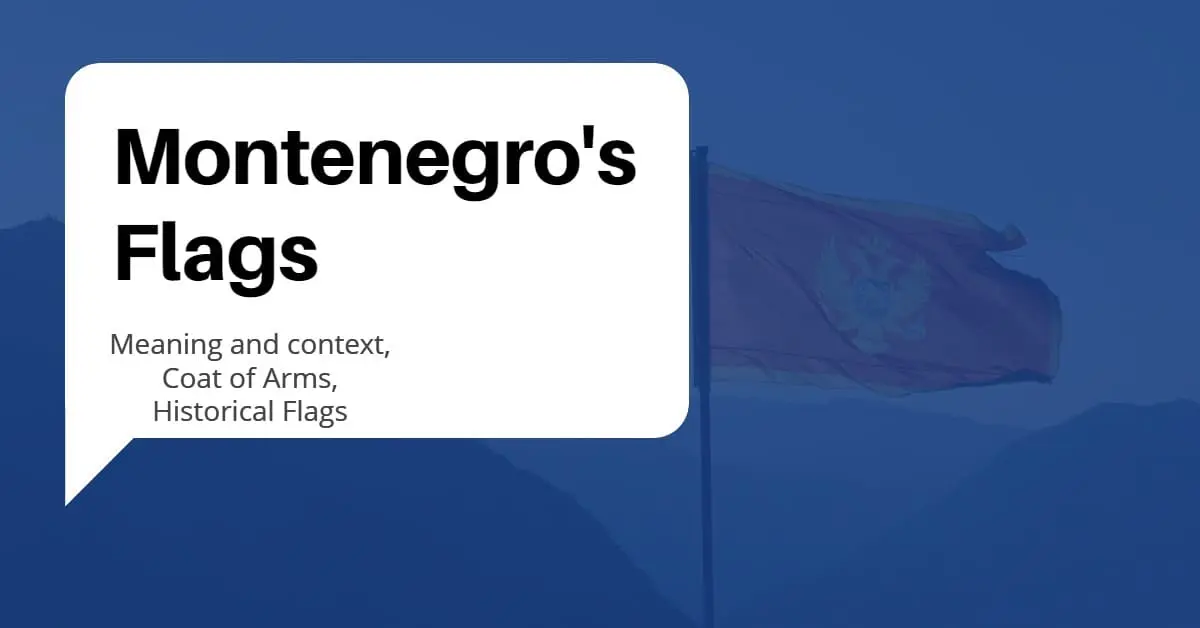
Table of Contents
ToggleThe Montenegro Flag: A Symbol of National Pride and Heritage?
The Montenegro national flag is a red flag with a proper golden border that portrays the Montenegrin coat of arms in its center. The flag was already introduced in 2004 when Montenegro was still in a state union with Serbia. It was kept as Montenegro’s national flag after the country’s independence in 2006.
source: Wikipedia
In the few weeks after the adoption of the new flag, a borderless fringed flag (with a golden fringe instead of a golden border) was in parallel use.
Info: A fringed flag is mostly used as an indoor flag.
Montenegro Coat of Arms
The Montenegrin flag portrays the national coat of arms: a crowned double-headed golden eagle holding up a globus cruciger and a scepter in his claws. Atop the scepter is a golden cross. The double eagle is a symbol of the Byzantine Empire – the heads symbolize the Representative of God on Earth.
The chest of the eagle holds a breast shield displaying a golden lion against a blue sky background. The lion stands on a green field. The globus cruciger is depicted in blue and has a golden waist and cross.
The coat of arms is portrayed on official uniforms, official invitations, and letters of the President, the Prime Minister, and the Chairman of the Constitutional Court among others.
Historical Coat of Arms Montenegro
From 1945 to 1992, Montenegro utilized another coat of arms that was in line with socialist iconography. It featured a laurel wreath and the typical red star motif engulfing the Lovcen Mausoleum. There are sea waves in the background, depicting Montenegro’s coastal geography.
The Mausoleum of Njegos is one of the most important landmarks in Montenegro. It is the burying site of their beloved leader Petar II Petrovic-Njegos and holds deep significance for the people of Montenegro.
Montenegro Flag Meaning
The Double-Headed Eagle symbolizes both earthly and church powers working together. One head stands for the material world whereas the other head symbolizes the divine. The two heads if taken together to symbolize the representative of God on earth. And thus the earthly ruler should exercise both power and justice.
According to traditional belief, the double-headed eagle is a messenger of God’s word which he transmits to the kings on earth. He does so by traveling up and down (between heaven and earth) in the Tree of Life.
The lion passant displayed on the inescutcheon of the flag resembles the winged lion of Venice. The Venetians ruled for almost 400 years over the coastal parts of Montenegro.
Large parts of Montenegro however were ruled by the Ottomans from the 15th century onwards. Montenegrins gained semi-autonomy from the Ottomans in 1696 under the rule of the Petrovic-Njegos dynasty.
In the 19th century, Prince-Bishop Petar II Petrovic-Njegos established good relations with the Russian Empire and became inspired by their coat of arms. That is why the two-headed eagle of the Russian flag looks very similar to its Montenegrin version.
Today, almost twenty years after Montenegro’s independence, the flag of Montenegro still bears some controversy. Not all segments of the population can identify with the current flag with the golden border.
The state flag is a display of national pride for ethnic Montenegrins and can be seen in public places such as schools and governmental offices. But large parts of the population that want closer ties with Serbia, have trouble accepting state symbols of independent Montenegro.
They prefer hissing and waving the historical flag of the Kingdom of Montenegro (1910 – 1918). They see this tricolor as a symbol of national pride, honor, and Orthodoxy. These factions of the population also reject calling Montenegro by its official name and prefer ‘Crna Gora’ instead. (Both Montenegro and Crna Gora mean the same – black mountain.)
Nevertheless, on official celebrations, sports events, and statehood day, the red Montenegrin flag with the yellow border is the only one that flaps in the wind.
The flag is permanently raised on the building of the Parliament of Montenegro, the Presidential Palace, and the buildings of the Constitutional Court and Prime Minister.
Info: The anthem of Montenegro is Oh, Bright Dawn of May (Oj svijetla majska zoro).
Was Montenegro part of Yugoslavia?
Montenegro was part of both Yugoslavia. The first one came into existence in 1918 and gained international recognition on 13 July 1922 in Paris. First, it came to be known as the ‘Kingdom of Serbs, Croats, and Slovenes’ and from 1929 onwards just the ‘Kingdom of Yugoslavia’.
Yugoslavia was invaded by the Axis powers in 1941 and was renamed in 1945 into the ‘Federal People’s Republic of Yugoslavia’. The monarchy was abolished in the same year and Yugoslavia became led by a communist government under Marshall Tito.
Six constituent republics made up the ‘SFRY’: Serbia, Croatia, Slovenia, Bosnia, Macedonia, and Montenegro. After the breakup of the SFRY in 1992, Montenegro became one of two constituent republics in the newly-established ‘Federal Republic of Yugoslavia’. Serbia was the second.
The FR Yugoslavia was transformed into a State Union in 2003 and Montenegro stayed part of it until 2006 when it declared independence.
Serbia and Montenegro Flag
From 1992 to 2003 Montenegro and Serbia have been constituent republics in the ‘Federal Republic of Yugoslavia’. As a flag, they used a tricolor made up of the colors BLUE – WHITE – RED.
This horizontal tricolor uses the same color combination as was used for the historical flags of the Socialist Federal Republic of Yugoslavia (1943 – 1992) and the Kingdom of Yugoslavia (1918 – 1941).
The SFRY flag had a red star in the middle which the Serbia and Montenegro flag lacked.
The Political Union of Serbia and Montenegro never adopted a new distinctive flag. They kept using the FR Yugoslavia tricolor until the dissolution of the union in 2006.
Montenegro had its flag as a constituent republic of the Federation. It was also a horizontal tricolor with a slightly different color combination. Starting from above, the first color was red, followed by light blue, and white.
The flag was in use from 1993 to 2004 when it was replaced by the new red flag with a gold border, based on an old royal banner.
Montenegrin Flag 1852 – 1918
From 1852 to 1910, Montenegro was a Duchy and was ruled by Danilo I Petrovic-Njegos from 1852 to 1860. He decided to transform the backward ecclesiastical principality of Montenegro which was ruled by religious authority into a secular and relatively modern state. The first constitution was adopted in 1855.
Danilo’s successor was Nikola I (Nicholas I) who would rule the country for the next 50 years. Following pressure from his people, Nikola adopted the new 1905 constitution, which foresaw that the national flag was the red-blue-white tricolor.
Under Nicholas I Montenegro was elevated to the rank of a kingdom in 1910. Montenegro kept using this tricolor featuring a white eagle during the First World War and the ears leading up to it.
source: Wikipedia
Before using the tricolor above, Montenegro had adopted another flag during the rule of Scepan Mali (Stephen the Little). The flag has a white background with a red frame featuring a golden cross on top of a spear.
The Montenegrin War Flag
The historical war flags in Montenegro were crusader flags (krstas-barjak) and originate from the Byzantine cross flag. They were plain in color with a cross in the center.
The most prominent Montenegrin war flag was red with a white or golden cross in the center. It originates from the Serbian military flag used during the Battle of Kosovo.
source: National Museum
This flag was used during the Montenegrin-Ottoman wars and most notably in the Battle of Vucji Do (1876) where the Montenegrins faced the Ottoman army under Grand Vizier Pasha and defeated it. Today it is exhibited in the National Museum of Montenegro in the former royal capital Cetinje.
The flag is popular with ethnic Montenegrins, especially in the region around Cetinje. People in that region have a strong sense of independence and are sensitive toward potential Serb influence. The war flag can be considered a symbol of heightened national pride and sends a much stronger signal than the national flag.
